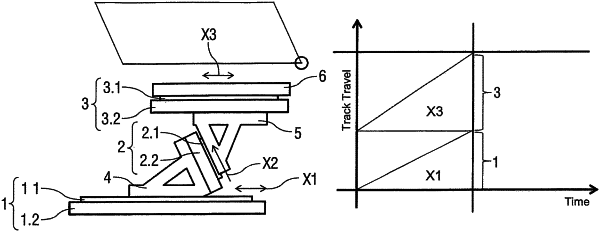| CPC B60N 2/163 (2013.01) | 9 Claims |

|
1. A seat adjustment mechanism for a vehicle seat, comprising:
at least one first rail pair, wherein the at least one first rail pair comprises an upper rail and a lower rail,
a height adjustment mechanism, wherein the height adjustment mechanism comprises at least one second rail pair, wherein the at least one second rail pair comprises an upper rail and a lower rail,
at least one third rail pair, wherein the at least one third rail pair comprises an upper rail and a lower rail, and
a first connecting element, wherein the first connecting element connects the upper rail of the at least one first rail pair to the lower rail of the at least one second rail pair, wherein the first connecting element is positioned on an upper side of the upper rail of the at least one first rail pair,
wherein the at least one second rail pair is arranged between the at least one first rail pair and the at least one third rail pair,
wherein the lower rail of the at least one second rail pair is positioned on the first connecting element,
wherein the at least one first rail pair, the at least one second rail pair, and the at least one third rail pair are configured to be actuated simultaneously,
wherein each of the at least one first rail pair and the at least one third rail pair is configured to allow a displacement in a vehicle longitudinal direction,
wherein the at least one second rail pair is configured to allow a displacement in a direction substantially obliquely upwards with respect to the vehicle longitudinal direction, and
wherein the at least one second rail pair is inclined upwards with respect to the at least one first rail pair, such that, when the upper rail of the at least one second rail pair displaces obliquely upwards away from the at least one first rail pair, the upper rail of the at least one second rail pair is configured to bring the vehicle seat frontwards towards a driving position from a comfort position.
|